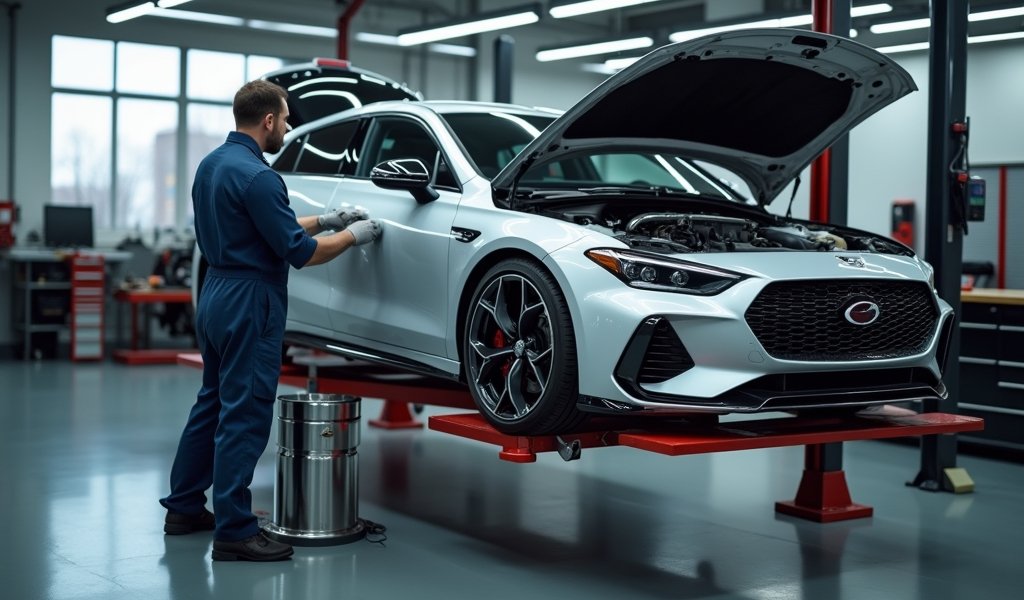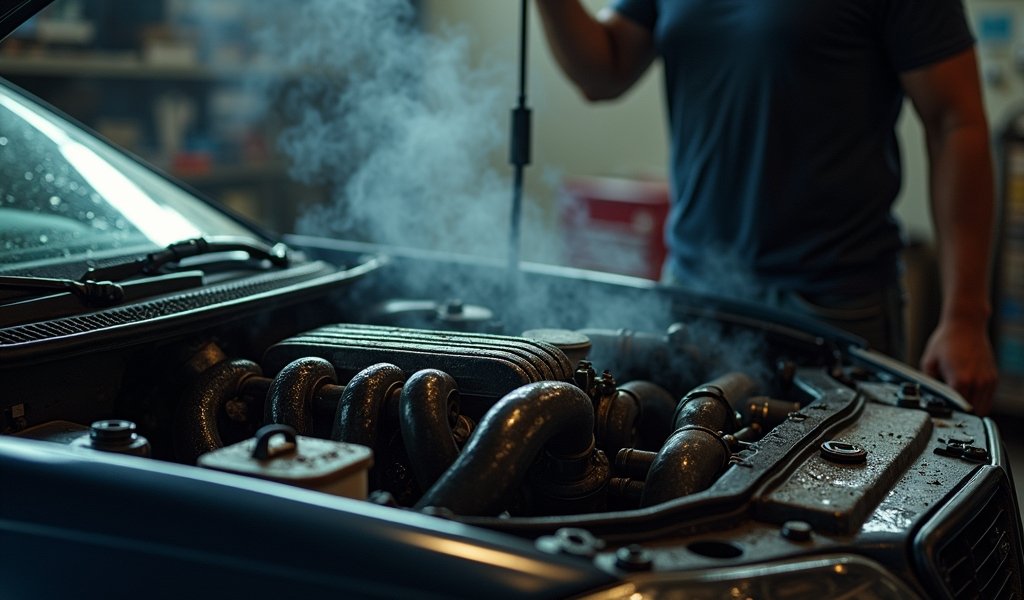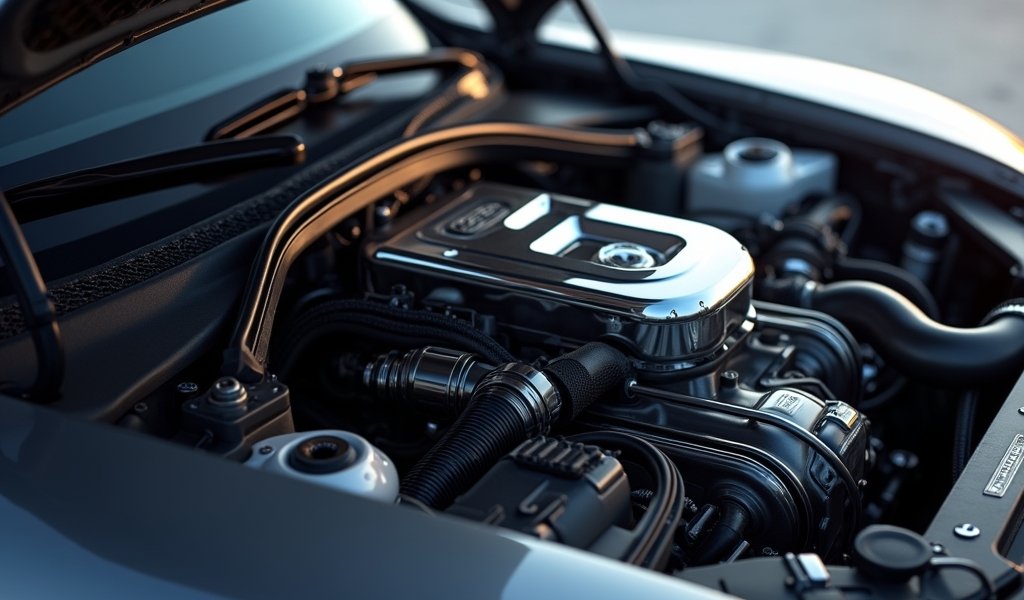Overview
This article explains how oil catch cans protect engines by preventing oil-laden blow-by gases from contaminating intake systems, which helps prevent carbon buildup, extends engine life, maintains fuel economy, preserves turbocharger performance, and reduces emissions. The author recommends this simple device as a cost-effective preventive maintenance solution, especially for direct-injection and turbocharged engines, with periodic emptying every 3,000-5,000 miles.
Table of Contents
- What Is an Oil Catch Can?
- Benefit #1: Prevents Carbon Buildup in the Intake System
- Benefit #2: Extends Engine Longevity
- Benefit #3: Maintains Optimal Fuel Economy
- Benefit #4: Preserves Turbocharger Performance
- Benefit #5: Reduces Harmful Emissions
- Installation and Maintenance Considerations
- Is an Oil Catch Can Right for Your Vehicle?
- Conclusion: Prevention Pays Off
- Frequently Asked Questions
Ever heard the saying “prevention is better than cure”? Under your hood, this wisdom applies perfectly to oil catch can benefits. As a master technician with 20+ years of experience, I’ve seen firsthand how this simple device can save your engine from some serious headaches down the road.
Most drivers don’t think about the oil vapor constantly circulating through their engines until problems start. By then, you’re looking at costly repairs that could have been easily prevented. Let’s pop the hood and explore how this unassuming component can be your engine’s best friend.
What Is an Oil Catch Can?
An oil catch can is essentially a filter for your engine’s ventilation system. Every engine produces “blow-by” – pressurized gases that slip past the piston rings during combustion and enter the crankcase. These gases contain tiny oil particles that, without intervention, get routed back into your intake system through the PCV (Positive Crankcase Ventilation) valve.
The catch can intercepts this oil-laden vapor before it reaches your intake, collecting the oil in a small reservoir while allowing clean air to continue circulating. Think of it as a bouncer that keeps troublemakers (oil droplets) out of the club (your intake manifold).
In modern engines, especially those with direct injection or forced induction, this simple filtration becomes crucial for maintaining engine health and performance. Without it, that oil slowly coats your intake valves, ports, and other components – creating problems that compound over time.

Benefit #1: Prevents Carbon Buildup in the Intake System
Carbon buildup is the silent killer of modern engines. When oil vapor recirculates through your intake, it creates a sticky residue that gradually transforms into hard carbon deposits. These deposits are particularly problematic in direct-injection engines, where fuel no longer washes over intake valves to keep them clean.
I recently worked on a 2018 Audi S4 with only 35,000 miles that already showed significant carbon buildup. The owner complained about rough idling and hesitation during acceleration – classic symptoms of intake valve deposits. After installing a catch can, we collected nearly 2 ounces of oil in just 3,000 miles – oil that would have otherwise coated their intake system.
According to a study published by the Society of Automotive Engineers, even moderate carbon deposits can reduce airflow by up to 15% and cause measurable power loss. This makes prevention significantly more valuable than the eventual cure – a costly intake valve cleaning service.
Benefit #2: Extends Engine Longevity
Your engine components are manufactured to incredibly precise tolerances – sometimes measured in microns. When oil builds up where it shouldn’t, it disrupts this delicate balance.
Oil contamination on intake valves can prevent them from seating properly, causing them to run hotter than designed. This accelerates valve guide and seat wear, potentially leading to compression issues and expensive repairs.
In turbocharged vehicles, oil contamination becomes even more critical. Turbo units operate at extreme temperatures and speeds – sometimes spinning at over 200,000 RPM. Even minor oil buildup on turbo components can affect balance and efficiency, potentially shortening their lifespan.
The math is simple: a quality catch can costs $100-300, while cylinder head repairs or turbo replacements can easily run into thousands. Many of my long-term customers who’ve installed catch cans extend their vehicle’s lifespan well beyond 200,000 miles without major engine issues.
Benefit #3: Maintains Optimal Fuel Economy
With today’s fuel prices, every MPG counts. Carbon deposits disrupt carefully engineered airflow patterns and create hot spots in combustion chambers that can cause pre-ignition. Your engine control unit tries to compensate by adjusting fuel trim, typically resulting in reduced fuel economy.
I’ve tracked fuel consumption on dozens of vehicles before and after catch can installation. On average, vehicles with significant carbon buildup showed 2-5% worse fuel economy compared to their clean-running counterparts. For someone driving 15,000 miles annually in a vehicle averaging 25 MPG, that’s an extra 30-75 gallons of fuel each year.
A customer with a 2017 Ford F-150 EcoBoost tracked his fuel economy meticulously after installing our recommended catch can setup. Over 20,000 miles, he documented a consistent 0.7 MPG improvement – saving roughly $200 annually at current fuel prices. The catch can paid for itself within the first year while also protecting his engine.
Benefit #4: Preserves Turbocharger Performance
If you drive a turbocharged vehicle, listen up – this benefit matters enormously to your driving experience and wallet. Turbochargers are particularly vulnerable to oil contamination issues because of their high operating temperatures and precise internal clearances.
When oil-laden blow-by gases enter a turbocharger’s compressor side, they create deposits on compressor wheels and housings. These deposits disrupt airflow, reducing efficiency and increasing turbo lag. As buildup accumulates, your turbo must work harder to produce the same boost, increasing wear and potentially shortening its lifespan.
I’ve documented boost pressure drops of 1-3 PSI in affected vehicles – which translates to noticeable performance loss. When we remove and inspect contaminated intake components, the evidence is unmistakable: oily residue coating turbo components and intake tracts.
A professional-grade catch can installation is one of the most cost-effective insurance policies for your turbocharger. Given that turbo replacements often cost $1,500-2,500, the return on investment becomes obvious for any enthusiast or careful owner.

Benefit #5: Reduces Harmful Emissions
Environmental considerations matter too. Carbon deposits in combustion chambers can increase hydrocarbon emissions by creating areas where fuel doesn’t burn completely. Oil contamination can also damage oxygen sensors and catalytic converters, compromising your vehicle’s emissions systems.
As emissions regulations tighten globally, keeping your engine’s combustion clean becomes not just a performance consideration but potentially a legal requirement. I’ve seen several vehicles fail emissions tests due to issues that could have been prevented with a catch can – particularly common in vehicles approaching the 60,000-mile mark.
According to EPA guidelines, proper maintenance of emission control systems is essential for reducing harmful pollutants. By capturing oil before it contaminates your intake system, catch cans help maintain the efficiency of your emissions control systems – benefiting both your vehicle and the environment.
Installation and Maintenance Considerations
Adding a catch can to your vehicle is relatively straightforward for most DIY enthusiasts. Most installations take 1-2 hours with basic hand tools, though the specifics vary by vehicle make and model. If you’re not comfortable with the installation, most shops charge $100-200 for professional fitting.
Maintenance is minimal but crucial – catch cans need to be emptied periodically. How often depends on your engine, driving conditions, and the size of the catch can reservoir. For most vehicles, checking every 3,000-5,000 miles (or with each oil change) works well. Some performance applications might require more frequent servicing.
The maintenance process itself is simple:
- Locate your catch can (typically mounted in the engine bay)
- Remove it according to the manufacturer’s instructions
- Empty the collected oil into a proper disposal container
- Reinstall the catch can securely
- Check connections to ensure there are no leaks
This five-minute procedure provides valuable insight into your engine’s health – the amount and color of collected oil can indicate potential internal issues. I always tell customers to keep a log of how much oil they collect at each servicing as a simple diagnostic tool.
Is an Oil Catch Can Right for Your Vehicle?
While all internal combustion engines can benefit from a catch can, certain vehicles stand to gain the most:
- Direct-injection engines (both turbocharged and naturally aspirated)
- Forced induction vehicles (turbocharged or supercharged)
- Performance vehicles where maintaining optimal power is critical
- High-mileage daily drivers
- Vehicles frequently driven for short trips or in stop-and-go traffic
If your driving habits include frequent short trips, your engine rarely reaches full operating temperature, which increases blow-by and oil contamination. Similarly, heavy stop-and-go traffic creates conditions where blow-by gases are more prevalent.
For vehicles under manufacturer warranty, it’s worth noting that quality catch cans can be installed in ways that don’t void your coverage. The best designs feature connections that can be quickly returned to stock configuration for dealer visits if necessary. Always follow maintenance best practices to protect both your engine and warranty.
Conclusion: Prevention Pays Off
After two decades in the shop, one thing remains constant – the vehicles that get preventative maintenance consistently outperform and outlast those that don’t. An oil catch can represents one of the most cost-effective insurance policies for your engine’s long-term health.
By preventing carbon buildup, extending engine life, maintaining fuel economy, preserving turbocharger performance, and reducing emissions, this simple device delivers benefits far exceeding its modest cost. Think of it as an investment that pays dividends with every mile.
If you’re serious about protecting your vehicle and avoiding costly repairs down the road, consider adding an oil catch can to your maintenance arsenal. Your engine will thank you with years of reliable, efficient performance – and your wallet will appreciate avoiding those expensive carbon cleaning services.
Ready to protect your engine from harmful oil contamination? Contact a trusted mechanic today to discuss the right catch can solution for your specific vehicle. Your engine deserves this simple protection that keeps it running cleaner, longer, and stronger for years to come.
Frequently Asked Questions
How much does an oil catch can cost?
Quality oil catch cans typically range from $100-$300 depending on brand and design. Installation adds another $100-$200 if professionally done.
Will installing a catch can void my warranty?
Most quality catch cans can be installed without permanent modifications and removed before dealer service if needed. Always check your specific warranty terms before installation.
How often should I empty my oil catch can?
Most catch cans should be checked and emptied every 3,000-5,000 miles or with each oil change. High-performance applications may require more frequent servicing.
Can I install an oil catch can myself?
Yes, most catch cans can be installed with basic hand tools in 1-2 hours. Vehicle-specific kits make the process straightforward for DIY enthusiasts.
Are oil catch cans legal?
Oil catch cans are legal in most jurisdictions when properly installed. Some racing or emissions-focused regions may have specific requirements, so check local regulations.

